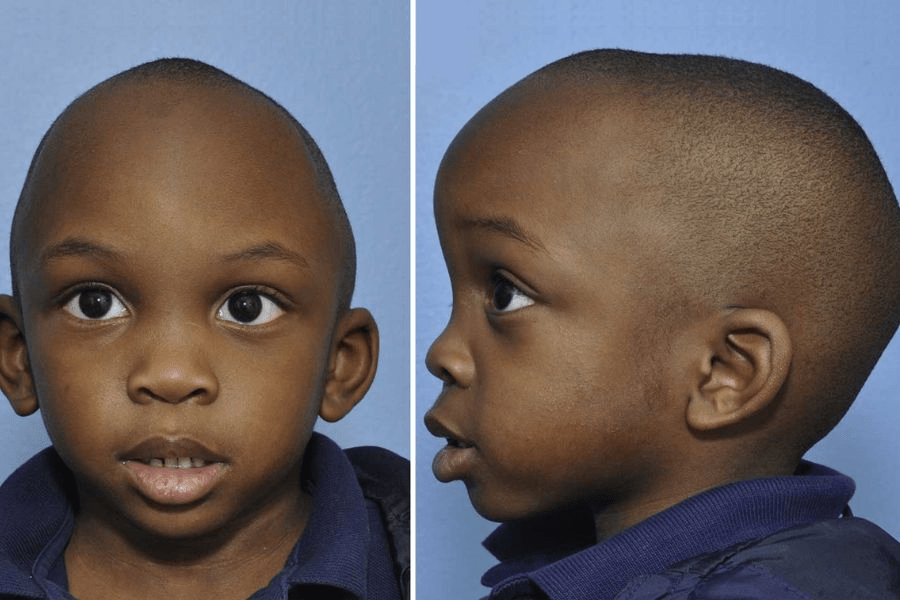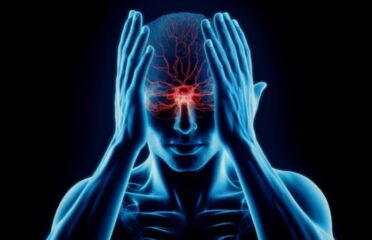Craniosynostosis
Overview

Craniosynostosis is a birth disorder that affects the joints between the bones of a baby's skull.
These joints, called cranial sutures, fuse prematurely before the baby's brain fully develops, leading to an abnormal head shape. This condition is caused by a genetic mutation or can occur sporadically in babies without a family history of the disorder.
Craniosynostosis can cause a range of symptoms, including developmental delays, seizures, and visual impairments. Treatment options include surgery to reshape the skull and relieve pressure on the brain.
With prompt and appropriate treatment, most children with craniosynostosis can lead happy and healthy lives.
If you suspect your child may have this disorder, it's essential to consult a medical professional as soon as possible.
Symptoms
• Craniosynostosis: Affects babies and is typically evident at birth, with symptoms becoming more noticeable in the first few months of life.
• Severity and Timing: Signs and severity depend on the number of fused sutures and the timing of fusion during brain development.
• Misshapen Skull: Symptoms may include a misshapen skull, varying based on the affected sutures.
• Raised Ridge: Development of a raised, hard ridge along affected sutures can alter the head shape abnormally.
• Importance of Medical Attention: Seeking medical attention is crucial if signs of craniosynostosis, such as these, are observed in a baby.
• Early Detection: Early detection and intervention are vital for optimal management and treatment of craniosynostosis.
Causes & Risks
• Nonsyndromic Craniosynostosis: The most common type with an unknown cause, believed to result from genetic and environmental factors.
• Syndromic Craniosynostosis: Caused by specific genetic syndromes like Apert, Pfeiffer, or Crouzon syndrome, which affect skull development and may have associated physical features and health issues.
• Genetic Testing: Available for diagnosing craniosynostosis and determining suitable treatment approaches, even when the cause is unknown.
• Importance of Early Intervention: Early detection and intervention are essential for better outcomes in managing craniosynostosis.
• Combined Factors: The cause of this condition is often a result of complex interactions between genetic factors and environmental influences.
• Optimal Outcomes: Timely diagnosis and appropriate treatment can significantly improve the prognosis for individuals with craniosynostosis.
Test & Diagnosis
• Physical Examination: Healthcare providers assess the baby's head for abnormalities like suture ridges and facial asymmetry.
• Imaging Studies: CT scans or MRIs of the skull are conducted to detect fused sutures. Ultrasound may also be used. Laser scans and photos aid in measuring the shape of the skull.
• Genetic Testing: If there is a suspicion of a genetic syndrome, the diagnosis is confirmed through genetic tests.
• Importance of Early Diagnosis: Early detection and intervention are vital for averting developmental delays and other associated complications.
• Comprehensive Approach: Diagnosis typically involves a combination of physical examination, imaging studies, and genetic testing.
• Preventive Measures: Early diagnosis and treatment are crucial for a child's health and development.
Treatment
• Treatment Severity Determination: Treatment approaches for craniosynostosis vary based on the severity of the condition, with mild cases often requiring no intervention.
• Helmet Therapy: Helmets can aid brain growth and address skull deformities in severe cases.
• Surgical Intervention: Surgery is the primary treatment for most cases, tailored to the severity of the condition and any underlying genetic syndromes present.
• Surgery aims to correct head shape, relieve brain pressure, create space for development, and improve appearance.
• Potential Surgical Complexity: The type and timing of surgery are carefully determined, with multiple surgeries sometimes needed to achieve optimal outcomes.
• Effective treatment requires comprehensive care planning to ensure optimal health and development outcomes for the baby.
Living With
The type and timing of surgery depend on various factors, including the specific sutures affected and the severity of the condition.
Close medical monitoring is essential after surgery to ensure proper healing and address potential complications. Children with craniosynostosis may also experience developmental delays or cognitive issues, and early intervention programs might be recommended to support their development.
Families must receive support and education about craniosynostosis, its treatment, and potential outcomes.
Connecting with support groups or organizations specializing in craniofacial differences can provide valuable resources and a community of support.
Living with a craniofacial difference can sometimes lead to emotional challenges, and counseling or therapy may be beneficial for both the affected individual and their family members to address these concerns.
Complications
• Craniosynostosis is the premature fusion of skull bones in babies, causing complications like abnormal head and facial shape and psychological challenges.
• Surgical Correction Benefits: Surgical intervention can mitigate the risk of increased intracranial pressure in simple craniosynostosis cases, reducing the likelihood of complications.
• Syndrome-associated risks: skull expansion challenges and elevated intracranial pressure may require prompt medical attention.
• Early medical consultation is essential when a child shows abnormal head shape or growth patterns. This helps in early diagnosis and proper treatment.
• Psychological Implications: Addressing craniosynostosis-related concerns early can prevent negative psychological impacts such as poor self-esteem and social isolation.
• Collaborative approach for craniosynostosis: Medical professionals and parents working together for better outcomes.

The Content is not intended to be a substitute for professional medical advice, diagnosis, or treatment. Always seek the advice of your physician or other qualified health provider with any questions you may have regarding a medical condition.
Know more about
Our Healthcare Planner
Personal Health Planner at BNC is a support staff who listens to your concerns and connects you with a Neuro Care provider. They prioritize your needs and create a trusting relationship between you and the provider.
Three fundamental values we can assure you:
1. Personalized Healthcare.
2. Most advanced robotic therapies
3. Transparent pricing





